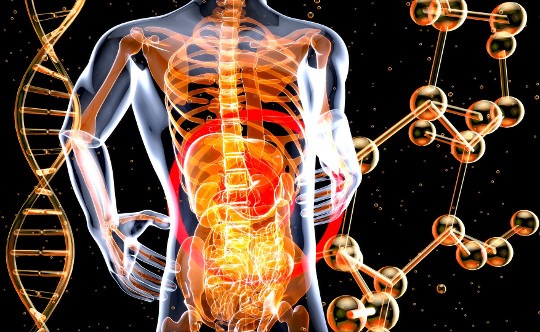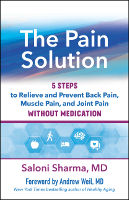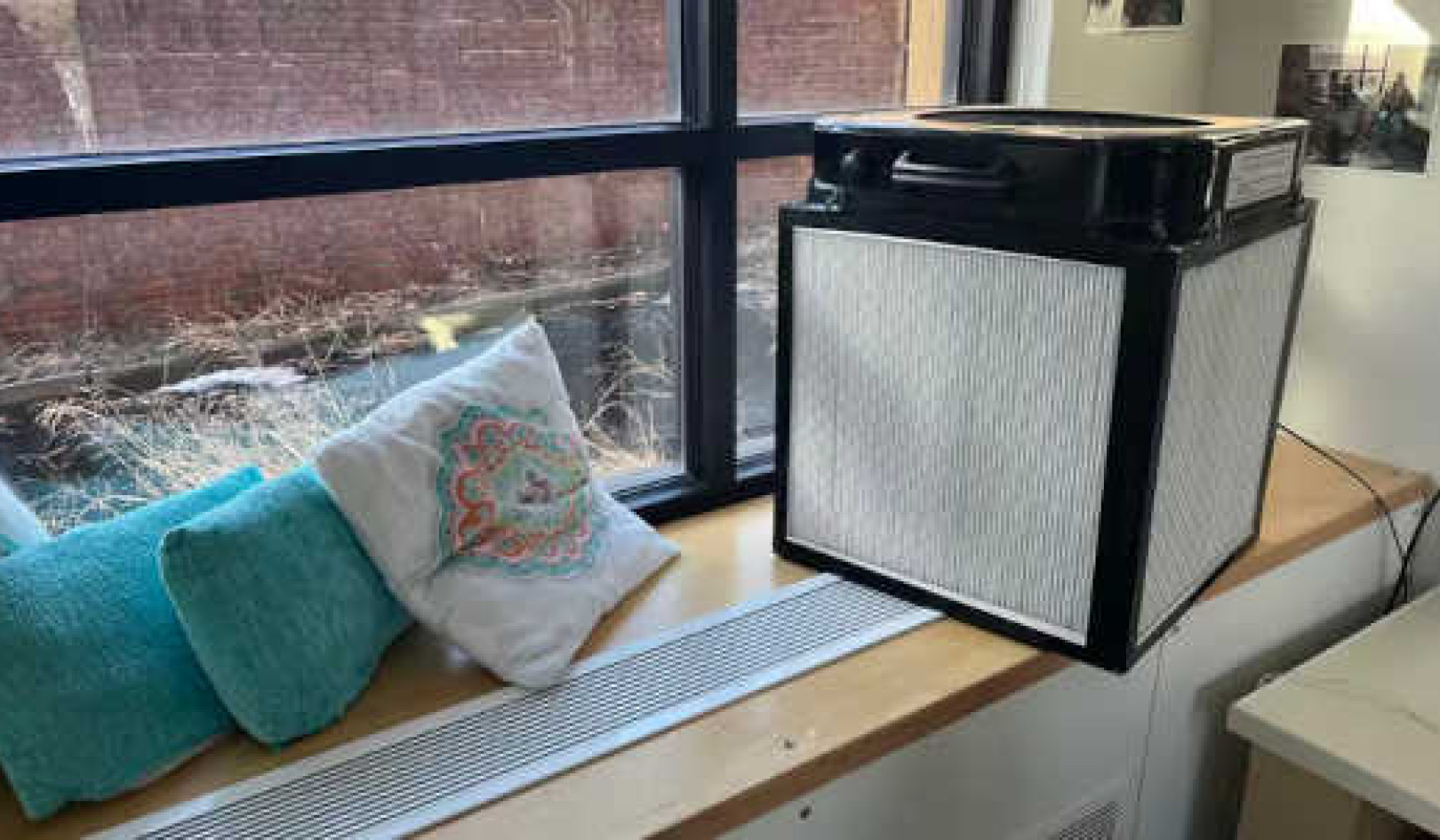
Image by Julien Tromeur
If pain and inflammation overdrive worsen back, muscle, and joint pain, why not simply take medications to block these systems? Healthcare providers routinely recommend nonsteroidal anti-inflammatory drugs (NSAIDs), opioids (narcotics), and steroids for pain.
If your body is injured or inflamed, the pain is a message from your brain: “Something is wrong, please fix this!” The message is not “Please muzzle the messenger for a few hours.” Yet that is the effect of these medications.
The pharmaceutical industry promotes the fantasy of zero pain: take a pill and eliminate pain. But pills offer only temporary, superficial relief and often have adverse effects.
Let’s look at how these common pain medications work and why they are not the best way to manage chronic pain.
NSAIDs
NSAIDs are commonly and liberally prescribed for the relief of orthopaedic pain and other inflammatory conditions with pain, stiffness, and swelling. When a tissue injury or infection occurs, cells release inflammatory substances called cytokines. NSAIDs such as ibuprofen (Advil), naproxen (Aleve), and aspirin block the production of cytokines, including interleukins and TNF-?.
This helps temporarily decrease pain. Unfortunately, these medications block the inflammation path only after the pain signaling mechanism has been activated. This approach is a temporary Band-aid, not a solution. It does not tackle the cause of the problem. Treatment of chronic pain with NSAIDs sets us up to remain dependent and trapped in a cycle of painful inflammation.
NSAIDs also have harmful side effects. Some NSAIDs completely and irreversibly block the production of certain beneficial substances, including protective prostaglandins in the stomach and kidneys. They disrupt the gut microbiome, which can cause more pain.
SOME SIDE EFFECTS OF NSAIDS
-
acid reflux
-
stomach bleeding and ulcers
-
intestinal bleeding
-
kidney disease
-
nausea, vomiting, and diarrhea
-
rash and other allergic reactions
-
slower healing of injuries to tendons, ligaments, and bones
-
kidney damage
-
liver damage
-
increased risk of heart attack and stroke
Opioids
Opioids, such as hydrocodone, oxycodone, and morphine, are commonly prescribed to relieve pain after an acute injury or major surgery. But the pharmaceutical promotion of “zero pain” and other factors have led patients to expect prescriptions for opioids after smaller surgeries, such as a hernia repair, gallbladder removal, or appendix removal. A 2020 study reveals that 91 percent of patients in the United States are prescribed opioids after these surgeries, compared with only 5 percent of patients in other countries.
While opioids may be of value in the initial days after a fracture or major surgery, beyond this period the harms outweigh the benefits. Opioid use can lead to rebound pain (when the opioid wears off) and increased pain signals over time. The suppressed pain message changes from a wimpy, indoor voice to a loud, outdoor voice. There is even a phenomenon called opioid-induced hyperalgesia, which makes people taking opioids more sensitive than other people to painful stimuli. In other words, a little needle poke to the shoulder feels like the blow of a fiery sword to the entire arm.
Opioids activate reward centers in the brain and cause a release of endorphins. These are neurotransmitters that make the mind and body feel good. They reduce pain and boost pleasure. The problem is that once the medication stops working, the mind and body may start to crave the good feelings and easy pick-me-ups. This leads to the danger of addiction.
Even if we do not develop cravings, over time the body develops a tolerance to opioids and requires more medication to produce the same effect. Recent research has shown that this is in part because long-term use of opioids increases painful inflammation.
Opioids negatively affect multiple body systems. Their depressive effects slow breathing and impair digestion, heart function, and cognitive functions, causing brain fog and leading to falls and other accidents. Multiple studies have confirmed a higher rate of fractures for people taking opioids.
Opioids disrupt hormone balances, affecting sexual and reproductive function as well as mood. Some research shows that these hormonal changes can also lead to prediabetes and more inflammation. In light of the recent pandemic, another key concern is that opioids suppress the immune system.
Multiple studies have found that people who take opioids over a long period have worse overall health outcomes. Clearly, opioids wreak havoc on the human body even without taking into account the risks of addiction, overdose, and death, and the associated social harms.
SOME SIDE EFFECTS OF OPIOIDS
-
depressed breathing
-
sleep apnea
-
constipation and risk of bowel obstruction
-
decreased sexual function and fertility
-
increased risk of falls and fractures
-
foggy thinking
-
increased pain and pain sensitivity
-
addiction
-
depression
-
impaired immune system
-
increased risk of heart failure
Steroids
Steroids, such as prednisone, block the same inflammation pathway as NSAIDs, but at an earlier point. They are powerful drugs used to reduce inflammation in the case of an acute injury or to blunt a dangerous immune response, such as an intense allergic reaction. But long-term use results in potentially severe effects on multiple body systems. Steroids are not a long-term pain solution.
SOME SIDE EFFECTS OF LONG-TERM STEROID USE
-
osteoporosis
-
muscle and joint damage
-
stomach ulcers
-
leg cramps
-
increased body hair growth
-
hypertension, rapid heart rate
-
mood swings, anger, depression
-
insomnia
-
fluid retention, electrolyte imbalances, and kidney problems
-
diabetes
-
adrenal damage
-
increased risk of infections
Our goal is to restore balance, not cause more chaos. Medications may temporarily decrease back, joint, and muscle pain, but they do not treat the root cause. Even worse, most pills create more imbalances and result in bigger problems. There is a better way.
The Relief-5R Alternative to Pain Medications
If all these widely prescribed medications come at such a cost to our physical and mental health, what alternatives do we have for relief from chronic pain? The Relief-5R plan saves our bodies from chronic painful inflammation, improves overall health, and restores quality of life. This is my prescription for you to ease back, muscle, and joint pain.
The Relief-5R plan:
-
Refuel with natural, unprocessed food
-
Revitalize through regular movement
-
Recharge through restorative sleep
-
Refresh by building resilience
-
Relate by connecting with others
Cost: Free
Quantity and refill: Unlimited
No side effects
Evidence-based
Be Specific
The Relief 5R-plan is simple and free, but it does require commitment to the goal of living with less pain. The secret to achieving goals is breaking them down into small steps and taking the first little step. We stand the best chance of succeeding when we write down our goals, make them specific, break them into small, actionable steps, and hold ourselves accountable. A goal like “I will eat more plant-based foods” is a setup for failure — it is broad, nonspecific, and offers no path for getting from where you are to where you want to be.
The pathway to success consists of specific, small changes in your routine to help you feel better and form lasting, beneficial habits. These microboosts are little steps that boost you toward ease and relief. In the past you may have found it difficult to make changes because they were not tailored to the way you live. Unfortunately, willpower alone is not enough to build lasting change. We must create habits that fit our individual lives.
Implementation Intention
An effective way to work toward your goals is to use a method called implementation intention. It means creating a plan that specifies the who, what, why, when, where, and how of working toward your goal. We know you (the who) want to crush painful inflammation (the what) to live better (the why). The microboosts recommended in this book show you the how. Deciding when and where you will implement your chosen microboosts builds a realistic, customized pain relief plan.
Microboosts work best when they are part of our established daily activities, such as eating dinner, brushing our teeth, and driving to work. Adding a visual cue helps reinforce the new behavior. To make it stick, articulate your active, concrete micro-boosts aloud and in writing. Each morning and evening, review your microboosts and big goals.
Helpful Steps
The human brain loves rewards, and seeing evidence of progress motivates us not only to stick with it but to do more. Log your progress daily and review it weekly. For every day you filled half your dinner plate with vegetables, substituted berries for a processed dessert, or passed up a bag of chips for a handful of nuts, add a penny to a jar, a sticker to a calendar, or a check to a phone application. If you complete your microboosts for a week, reward yourself with a special outing or healthy treat!
Success also requires removing roadblocks, pitfalls, deterrents, and distractions. For example, if you are trying to increase your activity level after work, but you know that once you start watching television you will not exercise later, then move the remote control to another room, or lay your workout clothes on the couch the night before. Place a sticky note on the clothes with your written goal and a reminder to hit the play button on your workout playlist now. Make it easy to follow the pain-relief path.
It’s also important to recognize what triggers unhealthy choices. If you know, for instance, that eating one cookie will inevitably mean that you eat three more, you have various options.
You could remove all cookies from the house. You could allow yourself one cookie a day and put it in a container labeled by the day of the week. Or you could keep real food front and center, with the cookies out of sight. Think of it like setting up a store — keep all the things you want to focus on at eye level and attractively displayed.
It is also powerful and motivating to say and write “I” statements, such as “I will have berries for dessert after dinner.” This reinforces your intention and helps it sink in as your plan, not just an idea. Use the mnemonic RELIEF to find easy ways to add microboosts to your day.
R Remove barriers
E Eye level
L Link to a specific activity
I “I” declaration
E Encourage progress by tracking
F Feel better!
Next Steps
-
Decide to build a lifestyle for less pain, less stress, and increased function.
-
Use the Relief-5R plan to reach your personal goals and live the life you deserve.
-
Make customized changes in your daily routine that add up to big pain relief.
-
Feel better!
Copyright 2022. All Rights Reserved.
Adapted with permission of the publisher,
New World Library.
Article Source: The Pain Solution
BOOK: The Pain Solution: 5 Steps to Relieve and Prevent Back Pain, Muscle Pain, and Joint Pain without Medication
by Saloni Sharma MD LAc Discover a proven path to pain relief. With empathy and scientific savvy, pain expert Dr. Saloni Sharma offers a personalized and innovative five-step pain relief program built on what she calls microboosts, little steps that add up to big results. Her drug-free plan is more than just a road map to less pain. It is a guide to the greater joy, health, and well-being that every person deserves.
Discover a proven path to pain relief. With empathy and scientific savvy, pain expert Dr. Saloni Sharma offers a personalized and innovative five-step pain relief program built on what she calls microboosts, little steps that add up to big results. Her drug-free plan is more than just a road map to less pain. It is a guide to the greater joy, health, and well-being that every person deserves.
Illustrated with inspiring patient examples and personal stories.
For more info and/or to order this book, click here. Also available as an Audiobook and as a Kindle edition.
About the Author
 Saloni Sharma, MD, LAc, is double board-certified in pain management and rehabilitation medicine. She is the medical director and founder of the Orthopaedic Integrative Health Center at Rothman Orthopaedics in Philadelphia and has treated thousands of patients. As a nationally recognized pain expert, she serves as co-chair for pain management and spine rehabilitation for the American Academy of Physical Medicine and Rehabilitation and as a member of the national Opioid Task Force. She has directed national courses on opioid alternatives and regularly speaks and advocates for ways to manage pain without medication.
Saloni Sharma, MD, LAc, is double board-certified in pain management and rehabilitation medicine. She is the medical director and founder of the Orthopaedic Integrative Health Center at Rothman Orthopaedics in Philadelphia and has treated thousands of patients. As a nationally recognized pain expert, she serves as co-chair for pain management and spine rehabilitation for the American Academy of Physical Medicine and Rehabilitation and as a member of the national Opioid Task Force. She has directed national courses on opioid alternatives and regularly speaks and advocates for ways to manage pain without medication.
Dr. Sharma is a fellow of the Andrew Weil Center for Integrative Medicine and has studied functional medicine and lifestyle medicine. She completed her acupuncture training at Harvard Medical School. She has studied yoga and meditation at Parmarth Niketan in Rishikesh, India, and mindfulness at Thomas Jefferson University. Dr. Sharma completed Stanford University’s inaugural physician well-being director course.
Visit her website at SaloniSharmaMD.com/
























